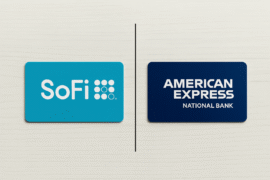This article may contain references to products or services from one or more of our advertisers or partners. We may receive compensation when you click on links to those products or services. Nonetheless, our opinions are our own.
The information presented in this article is accurate to the best of our knowledge at the time of publication. However, information is subject to change, and no guarantees are made about the continued accuracy or completeness of this content after its publication date.
- Key Highlights
- Introduction
- Understanding Net Working Capital
- The Importance of Net Working Capital for Business Health
- Calculating Net Working Capital
- A Beginner’s Guide to Improving Your Business’s Net Working Capital
- Strategies for Managing Net Working Capital
- Conclusion
- Frequently Asked Questions
- Recommended Reads
Key Highlights
- Net working capital signifies a company’s ability to manage its short-term financial obligations.
- It’s calculated by subtracting current liabilities from current assets.
- A positive net working capital indicates a company’s proficiency in settling short-term debts.
- Efficient management of net working capital is essential for maintaining business operations.
- Strategies for optimization include refining inventory control, receivables, and payables.
Introduction
It is essential to have a firm grasp on the financial aspects of running a business in today’s interconnected business world. This is in addition to having a solid understanding of network traffic and internet protocols. One key financial metric for businesses is net working capital, which reflects a company’s short-term financial health and its ability to pay off its short-term liabilities.
Understanding Net Working Capital
Think of a business as a machine that’s always running. Just as a machine needs fuel and maintenance, a business requires resources to stay functional. Net working capital is like the fuel that keeps a business going. It shows the gap between a company’s liquid assets and its short-term liabilities.
Defining Net Working Capital in Business Terms
Net working capital is used to measure a company’s ability to cover its short-term bills. It indicates how well a business can leverage its current assets to pay off its debts quickly. A strong net working capital is vital for a business, enabling it to pay off short-term debts, cover daily expenses, and invest in growth. Effective financial management relies on maintaining the right amount of net working capital.
The Importance of Net Working Capital for Business Health
A positive net working capital is a good sign for a company’s financial health. It shows that the company has enough liquid assets to meet its short-term obligations. Maintaining positive net working capital helps ensure the business runs smoothly, remains stable in the short term, and can seize growth opportunities. Liquidity is key in this context, as it shows how easily a company can convert its assets into cash to cover its bills.
Voted "Best Overall Budgeting App" by Forbes and WSJ
Monarch Money helps you budget, track spending, set goals, and plan your financial future—all in one app.
Get 50% OFF your first year with code MONARCHVIP
Calculating Net Working Capital
Now that we understand how essential net working capital is, let’s break down how to calculate it. The formula is straightforward, with two primary components.
Key Components of Net Working Capital
Net working capital is calculated by subtracting a company’s current liabilities from its current assets. Current assets include cash, accounts receivable, and inventory—resources expected to be converted into cash or used within one year. Current liabilities include short-term debts such as accounts payable, short-term loans, and unpaid bills, all of which must be settled within a year. The working capital ratio, which divides current assets by current liabilities, helps assess how well a company can manage its short-term debts.
Step-by-Step Calculation Process
Here’s a simple breakdown of how to calculate net working capital:
| Element | Formula |
|---|---|
| Net Working Capital | Current Assets – Current Liabilities |
| Current Assets | Cash + Accounts Receivable + Inventory + Other Current Assets |
| Current Liabilities | Accounts Payable + Short-Term Debt + Accrued Expenses + Other Current Liabilities |
A Beginner’s Guide to Improving Your Business’s Net Working Capital
Improving net working capital is always a smart move for a business, even if it’s not experiencing financial difficulties right now.
What You Need to Get Started
- Collect necessary financial documents: balance sheets, income statements, and cash flow statements.
- Use assessment tools: Financial ratios and industry benchmarks can offer valuable insights.
- Consider accounting software or professional help; both can streamline the process and ensure accuracy.
Step 1: Assessing Current Assets and Liabilities
Start by examining your balance sheet to get a clearer understanding of your current assets and liabilities. Focus on improving asset management, such as reducing excess inventory and speeding up receivables collection. Manage your cash flow to keep operations running smoothly. Also, review your liabilities and look for ways to better handle short-term debt and payment schedules.
Step 2: Identifying Immediate Opportunities for Improvement
Once you’ve assessed your financial position, look for areas where you can make quick changes. For example:
- Optimize Inventory Management: Is there excess stock that you could sell to free up cash?
- Improve Receivables Collection: Can you speed up invoicing or enforce stricter credit policies?
- Negotiate Better Payment Terms: Can you extend payment terms with suppliers to ease short-term cash flow?
Step 3: Implementing Long-Term Strategies
It’s not just about fixing immediate problems. Focus on strategies that will allow your working capital to grow over time:
- Align these strategies with business goals: This ensures you’re working towards long-term financial health.
- Leverage technology: Technology can streamline processes, improve efficiency, and enhance cash flow management.
Strategies for Managing Net Working Capital
Once you understand your net working capital, you can implement various strategies to manage it effectively.
Optimizing Inventory Management
Inventory is a significant component of a company’s current assets. In order to have sufficient stock to satisfy the demand of customers without overstocking, which can lead to an increase in expenses, it is essential to find the optimal balance of inventory. Using methods like just-in-time inventory, businesses can find the best stock levels. This helps improve how quickly they sell their products. Connecting these strategies with the supply chain makes the process even better.
Enhancing Receivables Collection
Maintaining a healthy cash flow requires that you promptly collect money that is owed to you. Establish clear invoicing procedures and offer multiple payment options. Set clear credit policies to avoid delays and actively manage debtor accounts. Address late payments promptly to reduce the risk of bad debts.
Effective Payables Management
Paying suppliers on time is essential for maintaining good relationships. However, negotiating payment terms can help optimize cash flow in the short term. Consider options like longer payment terms while maintaining strong ties with creditors. Implementing smart cash management techniques ensures you have enough liquidity to meet short-term financial needs without disrupting business operations.
Technology’s Role in Managing Net Working Capital
In today’s digital world, technology plays a critical role in managing net working capital efficiently.
Software Solutions for Real-Time Monitoring
- Use financial software to monitor real-time data, such as cash flow, inventory levels, and outstanding invoices.
- Leverage smart dashboards to track key performance indicators (KPIs) and make informed decisions.
- Real-time data helps businesses identify potential issues early and make adjustments to manage working capital more effectively.
Automation in Receivables and Payables
Embrace automation to streamline tasks and reduce the chances of errors. AI-powered tools can automate invoice processing, send payment reminders, and manage reconciliation. This not only saves time but also allows finance teams to focus on more strategic objectives.
Conclusion
When it comes to maintaining a healthy business, having a better understanding of net working capital is essential. By reviewing current assets and liabilities, businesses can identify opportunities for improvement and implement strategies to optimize their working capital. Effective management of inventory, receivables, and payables plays a pivotal role in this process. Additionally, leveraging technology for real-time monitoring and automation can help improve efficiency and cash flow management. Optimizing your net working capital strengthens cash flow and positions your business for growth. Stay informed, take action, and build a bright financial future for your business.
Frequently Asked Questions
What is a good net working capital ratio?
A good net working capital ratio typically falls between 1.2 and 2. This range reflects a healthy balance between cash availability and business operations. However, the ideal ratio varies depending on the industry, business size, and growth stage. It’s important to consider factors such as industry standards and business goals when determining the right ratio.
How does net working capital affect cash flow?
Net working capital directly impacts cash flow. It indicates how well a company can manage its short-term operations. A positive net working capital ensures the business has enough cash to cover daily expenses, such as purchasing inventory, paying employees, and handling short-term debts. Conversely, negative net working capital can lead to cash flow issues, limiting the company’s ability to invest and meet financial obligations.
Can a business have too much net working capital?
While having positive net working capital is generally beneficial, excessive capital tied up in current assets can cause missed opportunities. Individual resources, such as surplus cash or slow-moving inventory, could be better utilized to generate returns or fund growth initiatives. Striking the right balance—ensuring adequate liquidity while maximizing resource efficiency—is essential for optimal business performance.
How can I improve my business’s net working capital?
To improve net working capital, focus on optimizing inventory management, accelerating receivables collection, and extending payables where possible. Consider using technology to automate processes, monitor real-time financial data, and make informed decisions. Regularly assess your financial position to identify areas for improvement and ensure that your working capital supports your business goals.

Reviewed and edited by Albert Fang.
See a typo or want to suggest an edit/revision to the content? Use the contact us form to provide feedback.
At FangWallet, we value editorial integrity and open collaboration in curating quality content for readers to enjoy. Much appreciated for the assist.
Did you like our article and find it insightful? We encourage sharing the article link with family and friends to benefit as well - better yet, sharing on social media. Thank you for the support! 🍉
Article Title: Net Working Explained: A Key Financial Metric for Businesses
https://fangwallet.com/2025/02/15/net-working/The FangWallet Promise
FangWallet is an editorially independent resource - founded on breaking down challenging financial concepts for anyone to understand since 2014. While we adhere to editorial integrity, note that this post may contain references to products from our partners.
The FangWallet promise is always to have your best interest in mind and be transparent and honest about the financial picture.
Become an Insider

Subscribe to get a free daily budget planner printable to help get your money on track!
Make passive money the right way. No spam.
Editorial Disclaimer: The editorial content on this page is not provided by any of the companies mentioned. The opinions expressed here are the author's alone.
The content of this website is for informational purposes only and does not represent investment advice, or an offer or solicitation to buy or sell any security, investment, or product. Investors are encouraged to do their own due diligence, and, if necessary, consult professional advising before making any investment decisions. Investing involves a high degree of risk, and financial losses may occur including the potential loss of principal.
Source Citation References:
+ Inspo












































